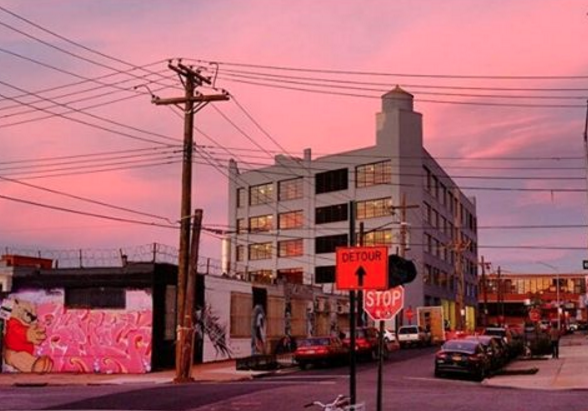Miriam Mosher
Writer
I recently spent the better part of a year away from New York. Upon returning, the first thing I noticed was that an Artichoke Pizza had replaced neighborhood stalwart Northeast Kingdom. I immediately felt a pang of loss, a surge of nostalgia for a place where I had literally never eaten, but whose existence meant something to me symbolically.
That’s the experience of New York—a flurry of change that leaves you in a perpetual state of looking back to yesteryear, of talking about the good ol’ days, of marking yourself as belonging because you remember that restaurant, that bar, that food cart … This cycle, which is already happening at a dizzying rate in New York, feels like it is on speed in Bushwick; it’s an unregulated merry-go-round, whose careening loop has undeniable casualties.
My apartment, which exists on the hinge that connects Bushwick to Ridgewood, has its requisite chicken slaughterhouse on the corner and bodega feet from the front door. It is also steps from the Bushwick Collective.
Bold paintings adorn the walls of converted warehouses creating a trippy pathway from my door to the train. It’s the first thing people see when they visit, a signifier of everything people perceive about Bushwick and its newest wave of residents. It’s a perception that I tentatively embrace, but also one that makes me feel uncomfortable. I have this irrational but undeniable feeling that, as the most recent newcomer, I am single-handedly responsible for the ills of gentrification.
When I first began working in the neighborhood, I was commuting from Clinton Hill. I spent my evenings at the craft beer bar where I still work, talking to the bearded masses before going out to neighborhood institutions like Pearl’s Social and The Cobra Club to squander my tips on tipping.
Now that I am a Bushwick resident, not simply a patron of its bar scene, I am starting to understand what makes Bushwick unique among Brooklyn’s patchwork of distinctive neighborhoods.
Living in Clinton Hill was a dramatically different experience. Yes, I was awoken every morning by the clanging sounds of the neighboring White Castle becoming luxury apartments, but the rate of change was slower, more contained.
Bushwick is different. It is at once a jostling overlay of people and history and yet it is also expansive, with empty blocks stretched out like canvases waiting to be painted. It is the marriage of a neighborhood, in the traditional sense, with industrial landscape that creates this particular synergistic energy.
When I see abandoned industrial complexes find new life as a meadery or a speakeasy, it makes reinvention feel not only plausible, but practically predestined. It’s invigorating, making me feel that potential for reinvention within myself. At the same time I know that the converted warehouses I so excitedly visit are someone else’s Northeast Kingdom, that they are bygone landmarks in a different mental map of the neighborhood.
Being new to Bushwick and simultaneously having a history here creates a bifurcated self-view. I am looking forward to exploring the neighborhood and making it my home, yet I catch myself marking my territory as though I already belong. Like a dog peeing on a fire hydrant, I remind those around me that I know these streets, that I remember when Artichoke Pizza was Northeast Kingdom, even if I never ate there.
Cover image: @fredtrevino via Instagram
Do you have a Bushwick experience you would like to share in an essay format? Have you lived here your whole life? Have you just moved here? Have you just moved out of here? Did you just turned 18, 30, 40, 50, … in Bushwick? Do you live in Bushwick as LGBTQIAPK? Submit your essays here.



… [Trackback]
[…] Find More to that Topic: bushwickdaily.com/wick-talk/4448-a-neighborhood-on-speed-bushwick-brooklyn/ […]